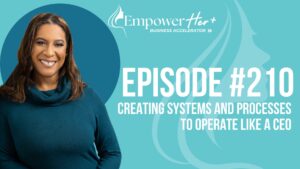Branding.
Yet another marketing term has several meanings and can look different for every business. Sure there is a technical definition, which we will dig deeper into in a moment. However, within the definition, so many terms can take on a life of their own.
This month, I plan on diving deeper into branding and what it means for small business owners. We will look at branding, how to tell a brand story, how to legally protect your brand, and how to strengthen your brand reputation.
I am so glad you could join me in today’s episode of the Marketing 101 for Small Business Owners Podcast. I am your host Philippa Channer and I am a content marketing strategist helping small business owners plan, create and execute their content marketing strategies.
Today we kick off the series exploring the different sides of branding, and whatever small business owners can do to establish their brand identity.
Introduction: What Does Company Branding Mean
According to the American Marketing Association, “a brand is a name, term, design, symbol, or any other feature that identifies one seller’s good or service as distinct from those of other sellers.”
But I feel this definition just scratches the surface of what a brand is. I believe branding goes much deeper than what you see in a company’s physical appearance. A good brand can also tell a story about the company and what they do. A company’s brand should be its most valuable asset because it is what distinguishes them from its competitors.
So to understand a company’s brand, the first step is to have a good understanding of the company’s mission, vision, and values. So much of what you visually see, the colors, the shape, and the words, all come from the heart behind the company and what they stand for. To establish the outside visual appeal of the business, we must start with the inside mission, vision, and values.
The next step in branding a company is to create an identity for the business. This can be done through logos, slogans, or other symbols representing the business. The logo should be simple enough for people to recognize it at first glance and convey some business information.
Branding is essential to any successful business strategy because it sets you apart from your competitors and tells your story to potential customers.
What Does Your Business Brand Look Like?
A brand is the face of a company. It is what people see and experience when they interact with your company. It is what sets you apart from other companies. It is what your customers talk about when they refer to you.
Many elements go into creating a brand, such as color scheme, logo design, website design, and more. A strong branding strategy helps make your business stand out from the competition and can help you establish a strong presence in the marketplace.
Your brand should be unique and memorable to represent your business’s values while also getting noticed by potential customers.
So how do you create an effective brand for your company? Here are five tips that will set your business up for branding success:
Tip 1: Determine your mission, vision, and value statement.
Defining these core essentials of who your company is and what they stand for is key to establishing your brand.
Tip 2: Define your target audience
It is essential that you know who you are speaking to and directing your messaging too. Who is it that you want to partner with and buy from you?
Tip 3: Select a color scheme
While the visual aspects of branding are not everything, it is something you want to create a look and feel for your brand that sets you apart while also defining and setting the stage for who you are.
Tip 4: Choose a distinguishing tagline
How can you say who you are, what you do, and how your product or service helps someone in a quick succinct way? That is your tagline.
Tip 5: Select a face for your brand.
Who is the person that represents your brand? For many small businesses and solopreneurs, the answer is easy, that would be the founder and owner of the company. For larger companies, that isn’t always the case. For instance, without looking them up, I don’t know the name and face behind Nike, but I know Michael Jordan and his investment in Nike Air Jordans. (I looked it up, it’s John Donahoe)
Conclusion and Recap on What We’ve Learned About Branding So Far
We’ve learned that branding is a process of creating and communicating a product’s or service’s values and promises to its various audiences. Branding is an ongoing process. It can’t be done in one day. It needs to be constantly monitored and updated as the company grows.
A brand identity is what makes your company unique. It’s what sets you apart from your competitors. The more you invest in branding, the more likely you will succeed in today’s competitive marketplace. And to set your brand identity, you need to follow these steps:
- Determine your mission, vision, and value statement
- Define your target audience
- Select a color scheme
- Choose a tagline
- Select a face for your brand.
I am excited for this series and look forward to my conversation next week with a branding expert who takes the art of storytelling to a whole new level. If you haven’t already scheduled a free consultation with me, be sure to do so today.














